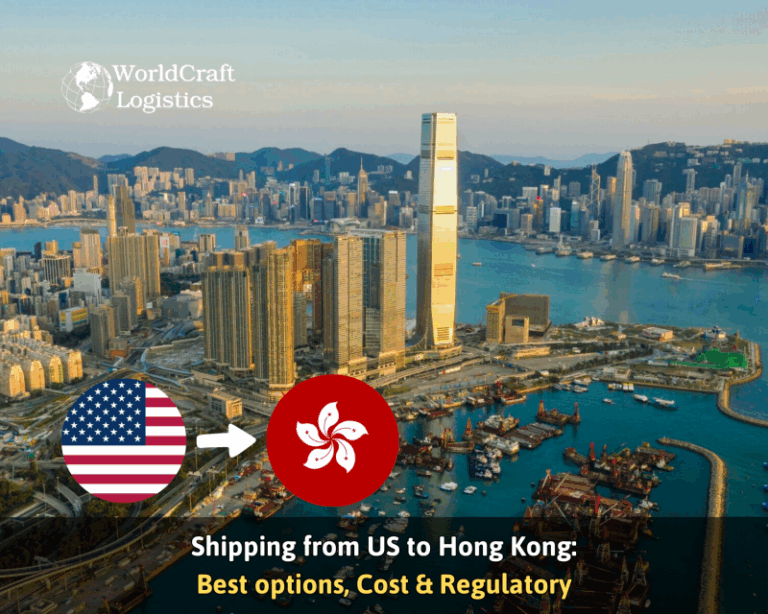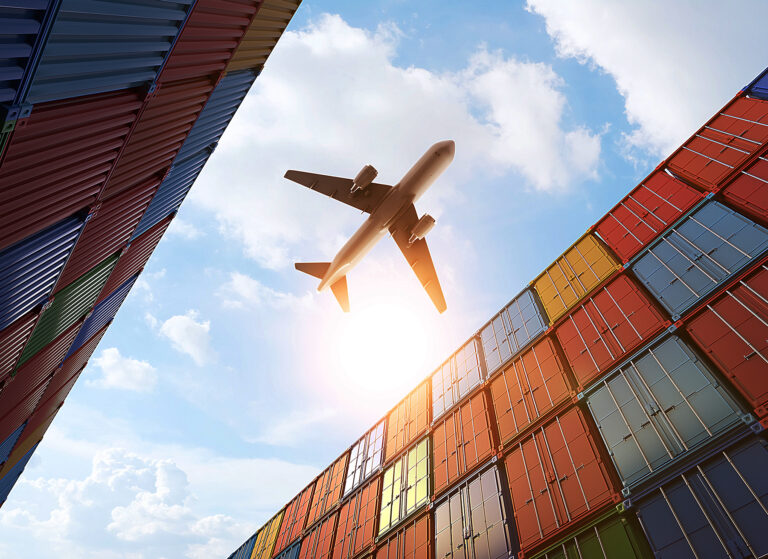Ultimate Guide to Shipping to Pakistan: Costs, Methods, and Key Tips (2025)
Why Shipping to Pakistan Matters
Pakistan’s e-commerce market, valued at $6 billion in 2025, grows at 5% annually, driven by a young, digitally-savvy population and increasing internet access. As a key player in the China-Pakistan Economic Corridor (CPEC), Pakistan attracts shipments from China, the U.S., Germany, and Japan. Users searching “shipping to Pakistan” seek cost estimates, reliable providers, and customs guidance. This guide details shipping options, costs, transit times, and considerations for small parcels, bulk cargo, and containers, using Cainiao Global’s data for 1kg parcels from China (76 CNY, ~$10.50 USD, 10–14 days).
Shipping Methods to Pakistan
Shipping to Pakistan includes sea freight, air freight, rail freight, and express courier services. Each method suits different needs based on shipment size, urgency, and budget.
Sea Freight: Container and Bulk Cargo
Sea freight is cost-effective for large shipments like electronics, textiles, or vehicles, primarily arriving at Karachi Port. It includes Full Container Load (FCL), Less than Container Load (LCL), and breakbulk/RoRo for oversized cargo.
Full Container Load (FCL)
FCL involves reserving a 20-foot or 40-foot container, ideal for large volumes.
- Costs:
- China (e.g., Shanghai to Karachi): $3,300 (20ft); $3,500 (40ft) (June 2025 rates).
- U.S. (e.g., New York to Karachi): $3,000–$5,000 (20ft); $4,500–$7,000 (40ft).
- Germany (e.g., Hamburg to Karachi): $2,200–$3,800 (20ft); $3,000–$5,000 (40ft).
- Japan (e.g., Yokohama to Karachi): $2,800–$4,200 (20ft); $3,800–$5,500 (40ft).
- Transit Times:
- China: 10–15 days.
- U.S.: 30–45 days.
- Germany: 25–35 days.
- Japan: 30–40 days.
- Considerations:
- Best for shipments filling at least half a container.
- Additional costs include fuel surcharges (10–15%), port fees ($100–$300), and inland transport.
- Pakistani customs require a commercial invoice, packing list, bill of lading, and import license for certain goods.
Less than Container Load (LCL)
LCL is suitable for smaller shipments, sharing container space with other cargo.
- Costs:
- China: Cainiao Global charges 76 CNY (~$10.50 USD) for a 1kg parcel, 10–14 days. For 1 cubic meter, expect $80–$120 USD.
- U.S.: $100–$150 USD per cubic meter.
- Germany: $70–$110 USD per cubic meter.
- Japan: $90–$140 USD per cubic meter.
- Transit Times:
- China: 15–25 days.
- U.S.: 35–50 days.
- Germany: 25–35 days.
- Japan: 30–40 days.
- Considerations:
- Cost-effective for shipments under 500kg.
- Longer transit times due to consolidation.
- Dimensional weight charges apply (length x width x height / 1000 for sea).
Breakbulk and RoRo (Roll-on/Roll-off)
Breakbulk and RoRo handle oversized cargo like vehicles or machinery.
- Costs:
- China: RoRo for a car costs $1,000–$1,600 USD; breakbulk is $80–$150 USD per metric ton.
- U.S.: RoRo costs $1,200–$1,800 USD.
- Germany: RoRo costs $900–$1,400 USD.
- Japan: RoRo costs $1,000–$1,500 USD.
- Transit Times:
- Similar to FCL/LCL: 10–50 days depending on origin.
- Considerations:
- RoRo suits vehicles; breakbulk is for oversized items.
- Marine insurance (0.3–2% of cargo value) is recommended.
Air Freight: Bulk and Small Parcels
Air freight is faster, ideal for time-sensitive or high-value goods like electronics or small parcels, arriving at Karachi or Lahore airports.
Bulk Air Freight
Bulk air freight suits shipments over 4 lbs, such as commercial inventory.
- Costs:
- China: $5.00 per kg for shipments over 1000 kg (June 2025).
- U.S.: $4–$8 USD per kg.
- Germany: $3–$6 USD per kg.
- Japan: $5–$9 USD per kg.
- Transit Times:
- China: 2–5 days.
- U.S.: 5–10 days.
- Germany: 3–6 days.
- Japan: 3–7 days.
- Considerations:
- Volumetric weight (length x width x height / 6000) may increase costs.
- Customs clearance requires an airway bill and commercial invoice.
Small Parcel Express Services
Express couriers are perfect for e-commerce and personal parcels under 1kg.
- Costs:
- China: Cainiao Global charges 76 CNY (~$10.50 USD) for 1kg, 10–14 days. DHL/FedEx: $25–$45 USD, 2–5 days.
- U.S.: $20.88 (Flat Export, limited tracking) to $40 USD (USPS, FedEx), 4–10 days.
- Germany: $12–$35 USD, 3–6 days.
- Japan: $15–$40 USD, 3–5 days.
- Transit Times:
- China: 10–14 days (Cainiao); 2–5 days (DHL/FedEx).
- U.S.: 4–10 days (economy); 1–4 days (express).
- Germany: 3–6 days.
- Japan: 3–5 days.
- Considerations:
- Cainiao is budget-friendly but slower.
- Tracking is standard with most couriers.
- VAT (17%) and duties (up to 20%) apply for parcels over $70 USD.
Rail Freight
Rail freight is a cost-effective alternative for shipments from China, leveraging CPEC routes.
- Costs:
- China: $2–$4 USD per kg, roughly half the cost of air freight.
- Other Origins: Limited availability; costs vary.
- Transit Times:
- China: 12–18 days to Karachi.
- Considerations:
- Suitable for medium-sized shipments.
- Limited to China–Pakistan routes due to rail infrastructure.
Cost Comparison Table
| Method | Origin | Cost (1kg) | Transit Time | Best For |
|---|---|---|---|---|
| Sea Freight (FCL) | China | $3,300–$3,500 (container) | 10–15 days | Large shipments |
| Sea Freight (LCL) | China | $10.50–$120 (1kg–1m³) | 15–25 days | Small–medium shipments |
| Air Freight (Bulk) | China | $5.00 per kg | 2–5 days | High-value goods |
| Express (Small Parcel) | China | $10.50–$45 | 2–14 days | E-commerce, personal parcels |
| Rail Freight | China | $2–$4 per kg | 12–18 days | Medium-sized shipments |
| Sea Freight (FCL) | U.S. | $3,000–$7,000 (container) | 30–45 days | Large shipments |
| Express (Small Parcel) | U.S. | $20.88–$40 | 4–10 days | E-commerce, personal parcels |
| Sea Freight (FCL) | Germany | $2,200–$5,000 (container) | 25–35 days | Large shipments |
| Express (Small Parcel) | Germany | $12–$35 | 3–6 days | E-commerce, personal parcels |
| Sea Freight (FCL) | Japan | $2,800–$5,500 (container) | 30–40 days | Large shipments |
| Express (Small Parcel) | Japan | $15–$40 | 3–5 days | E-commerce, personal parcels |
Recommended Service Providers
- Sea Freight:
- Maersk: Reliable for FCL/LCL to Karachi.
- COSCO: Strong for China–Pakistan routes.
- iContainers: Competitive rates with online booking.
- Air Freight:
- Emirates SkyCargo: Efficient for China–Pakistan routes.
- Lufthansa Cargo: Ideal for Germany–Pakistan.
- DHL Air Freight: Strong for U.S.–Pakistan bulk air.
- Express Courier:
- Cainiao Global: Budget-friendly for 1kg parcels from China.
- DHL Express: Fast, reliable for global shipments.
- FedEx/UPS: Consistent for U.S. and Japan routes.
- Flat Export: Cheapest from U.S. at $20.88 for 0.5 lbs.
- Rail Freight:
- SINO Shipping: Specializes in China–Pakistan rail freight.
- Foresmart: Offers rail options.
Key Considerations for Shipping to Pakistan
Customs and Regulations
- Import Duties: Goods over $70 USD incur 17% VAT, up to 20% duties (CIF method), and additional fees (3.5% import declaration, 2% railway levy).
- Documentation: Commercial invoice, packing list, bill of lading/airway bill, and customs declaration form are required. Contact recipients for payment arrangements.
- Prohibited Items: Firearms, narcotics, and counterfeit goods are banned. Check Pakistan Customs for restrictions.
Packaging and Dimensional Weight
- Use sturdy, lightweight packaging to minimize weight.
- Calculate volumetric weight for air freight (length x width x height / 6000).
- Secure cargo for sea freight to withstand port handling and humid conditions.
Major Ports and Airports
- Ports: Karachi is the primary entry point, followed by Port Qasim.
- Airports: Karachi (Jinnah International) and Lahore are main hubs for air freight and parcels.
- Choose destinations near your recipient to reduce inland costs.
Seasonal and Logistical Factors
- Peak seasons (e.g., Q4, Chinese New Year) increase costs and cause delays.
- Monsoon season (July–September) may disrupt inland transport.
- Check holidays like Eid-ul-Fitr (April) for customs delays.
Tracking and Insurance
- Use providers with robust tracking (Cainiao, DHL, iContainers).
- Insure high-value shipments (0.3–2% of cargo value) to cover loss or damage.
Tips for Cost-Effective Shipping
- Compare Rates: Use platforms like Freightos or Easyship for competitive quotes.
- Optimize Size: Stay under 1kg for Cainiao’s 76 CNY rate from China.
- Plan for Customs: Use a customs broker to avoid clearance delays.
- Use Local Delivery: Partner with Pakistan Post or TCS for last-mile delivery.
- Leverage E-commerce Platforms: Alibaba’s Cainiao offers discounted rates for bulk buyers.
Conclusion
Shipping to Pakistan is streamlined with options for every need. Cainiao Global’s 76 CNY (~$10.50 USD) rate for 1kg parcels from China is ideal for e-commerce, while sea freight suits bulk shipments, air freight ensures speed, and rail freight offers a balanced option via CPEC. By understanding costs, selecting reliable providers, and navigating customs, you can optimize logistics. For real-time quotes, contact Cainiao Global, Maersk, DHL, or use Freightos.

